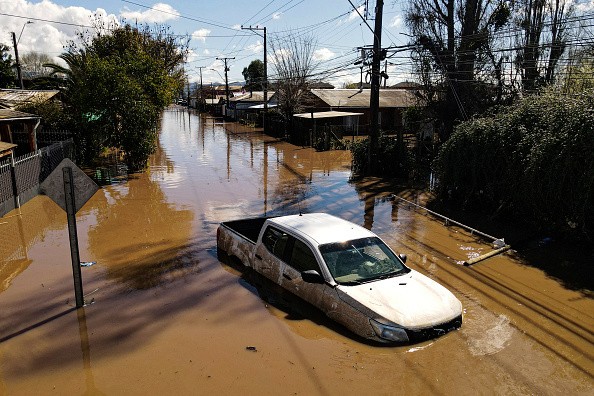A new report by the NOAA showed that high tide flooding, also known as sunny day flooding or nuisance flooding, is becoming more frequent and severe in many coastal areas of the US due to sea level rise and climate change.
High tide flooding occurs when tides reach anywhere between 1 to 2 feet above the daily average high tide, depending on the location, and can cause water to flood streets, buildings, and infrastructure.
The report, published this month, analyzed the number of high tide flood days recorded at 98 tide gauges along the US coast from May 2022 to April, and provides projections for the next year and the next decades.
High tide flooding and it is increasing

High tide flooding, also known as sunny day flooding or nuisance flooding, occurs when tides reach anywhere between one to two feet above the daily average high tide, depending on the location.
High tide flooding can cause water to inundate streets, sidewalks, parking lots, basements, and storm drains, disrupting traffic, damaging infrastructure, and affecting public health and safety.
It is becoming more common and severe due to sea level rise, which is driven by climate change.
Sea level rise increases the baseline water level from which tides operate, making it easier for high tides to exceed the flooding threshold.
It also amplifies the effects of storm surges, which are temporary increases in water levels caused by strong winds and low pressure.
Other factors that can influence high tide flooding include local land subsidence or uplift, coastal erosion or accretion, changes in ocean currents and circulation, and natural variability such as El Niño and La Niña.
High tide flood days occurred and are expected to occur
According to the report, the US experienced an average of six high-tide flood days from May 2022 to April, which is about twice as many as in 2000.
There was a large regional variation in the number of flood days observed. The East Coast had an average of nine flood days, while the West Coast had an average of three flood days.
The Gulf Coast had an average of seven flood days, while Hawaii and Alaska had less than one flood day.
The report also identified eight locations that experienced record-breaking or record-tying high tide flood days in 2022.
These locations were Trident Pier, Florida; Vaca Key, Florida; Magueyes Island, Puerto Rico; Kiptopeke, Virginia; Fort Pulaski, Georgia; Fernandina Beach, Florida; Naples, Florida; and Port Townsend, Washington.
The report predicted that from May 2023 to April 2024, the US will experience between four to nine high tide flood days on average-an increase from last year's prediction of three to seven days and about three times as many as in 2000.
The report also projected that by 2030, the US will experience between seven to 15 high tide flood days on average per year, and by 2050, between 25 to 75 high tide flood days on average per year.
The report noted that the expected strengthening of El Niño in late 2023 could further increase the frequency and severity of high tide flooding along the East and West coasts.
The report also warned that some locations could experience more than 100 high tide flood days per year by 2050 under high-emissions scenarios.
Related Article : Mid-Atlantic Cities to Experience Another Round of Coastal Flooding
© 2025 NatureWorldNews.com All rights reserved. Do not reproduce without permission.





